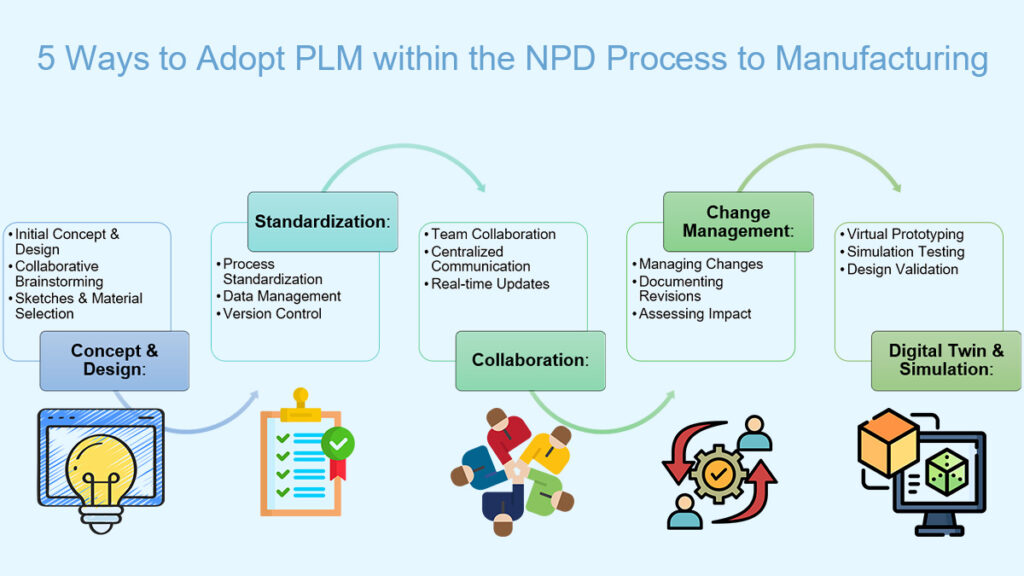
Introduction:
In today’s fast-paced manufacturing world, launching new products successfully requires more than just innovative ideas. Integrating Product Lifecycle Management (PLM) into the New Product Development (NPD) process is crucial for smooth transitions from concept to production. At Neelsmartec, we empower manufacturers with the right strategies to make this integration seamless and efficient. Here are five key ways to adopt PLM within the NPD process, illustrated through the design and development of a pen.
1. Early Integration of PLM in NPD
Starting PLM integration early in product development is essential. Imagine designing a new pen. By involving PLM from the initial concept phase, all crucial data—like initial sketches, material choices, and ergonomic studies—are captured and shared across teams. This early integration aligns the goals of design, engineering, and manufacturing, fostering collaboration right from the start. For example, the design team can easily share the pen’s sketches and ergonomic data with the engineering team, ensuring the pen is both attractive and functional.
2. Standardizing Processes and Data
PLM excels at standardizing processes and data management. Consistency is key in NPD, and PLM provides a structured framework for managing product data, version control, and documentation. For our pen, standardizing the design process ensures everyone follows the same steps from initial design to final production. This standardization reduces errors and ensures everyone has the most up-to-date information, such as the latest pen prototype and its specifications, enhancing overall efficiency.
3. Enhancing Collaboration and Communication
PLM bridges communication gaps between different teams. By centralizing data and providing a single source of truth, PLM enhances collaboration and communication. For the pen project, design changes, updates, and feedback can be shared instantly. If the design team decides to alter the pen’s grip for better comfort, this change is immediately visible to the engineering and manufacturing teams. This guarantees that everyone is aligned and able to make informed decisions swiftly.
4. Effective Change Management
Change is inevitable in product development, and managing these changes effectively is crucial. PLM systems track and manage changes, allowing for a controlled and transparent process. For the pen project, if the material for the pen’s barrel needs to change from plastic to metal for durability, PLM ensures this change is documented, its impact assessed, and implemented efficiently. This minimizes disruptions and keeps the product development timeline on track.
5. Leveraging Digital Twin and Simulation
Digital twin technology and simulation within PLM significantly enhance the NPD process. For our pen, a digital twin creates a virtual replica, enabling us to test and validate the design before physical manufacturing. Simulations can reveal potential issues, such as the durability of the pen’s clip or the smoothness of the ink flow. By identifying these issues early, we reduce time-to-market and costs, ensuring the final product is innovative, robust, and reliable.
Conclusion:
Adopting PLM within the NPD process is not just about implementing a tool; it’s about embracing a holistic approach to product development. By following these five strategies, manufacturers can streamline their processes, enhance collaboration, and achieve faster, more efficient product launches. At Neelsmartec, we are committed to guiding you through this transformative journey, ensuring you reap the full benefits of PLM integration. Through the continuous example of designing and developing a pen, we’ve illustrated how these strategies can be practically and effectively applied.
Are you a SME manufacturer looking to automate your NPD process? Connect with us to explore how OpenBOM PLM can streamline your NPD workflow. If you are a discrete manufacturer aiming to automate your NPD to manufacturing process, reach out to us to discover the benefits of Windchill PLM.

